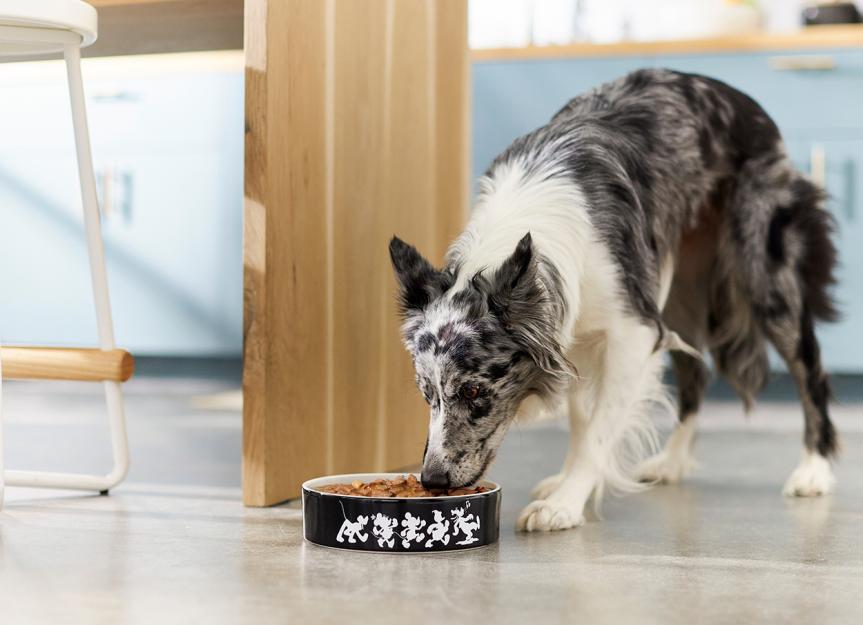
Many pet parents consider their dogs part of the family, so it’s no surprise that more people are interested in feeding their pets food that meets similar standards. One increasingly popular option is human-grade dog food. But while it may offer certain benefits, is it the right choice for your dog?
Here’s what to know about human-grade dog food—and why it’s important to consult your veterinarian before making a switch.
Key Takeaways
- Human-grade dog food contains ingredients safe for human consumption, but that doesn’t mean it’s nutritionally complete or balanced for dogs.
- A few key benefits to human-grade dog foods include high palatability, easy digestibility, and high protein content.
- Always consult your veterinarian before making changes to your dog’s diet.
What Is Human-Grade Dog Food?
Human-grade dog food is made with ingredients that are considered safe for human consumption. However, that doesn’t automatically mean the food is complete and balanced for dogs. Some human-grade diets may require additional supplementation to provide the full range of nutrients your dog needs to stay healthy.
A few human-grade dog food brands include JustFoodForDogs, Ollie, The Farmer’s Dog, and Get Real.
The Pros of Human-Grade Dog Food
There are several benefits of feeding your dog a human-grade diet:
-
High in protein: Quality protein supports muscle development, immune function, and overall health. Higher protein content can also reduce stool volume.
-
Highly digestible: Because human-grade ingredients are typically less processed, more nutrients stay intact and available for absorption.
-
Highly palatable: Human-grade dog foods contain fresh, nutrient-dense ingredients with minimal processing, which helps retain flavor and makes them more appealing to dogs.
-
Supports gut health: A 2022 study found a beneficial shift in the gut microbiome of dogs fed human-grade diets compared to those eating traditional kibbles, potentially leading to improved digestion and nutrient absorption.
That said, research is ongoing regarding the long-term effects of human-grade dog food. As this area of nutrition is relatively new, more data is needed to fully assess its benefits over time.
The Cons of Human-Grade Dog Food
Despite its potential benefits, human-grade dog food also has some drawbacks, including:
-
Lacks nutritional completeness: While these diets contain high-quality ingredients, they aren’t always formulated to be complete and balanced for dogs. Some may lack essential nutrients or require additional supplementation.
Additionally, certain dogs may need to avoid some human-grade diets, particularly if the formulas are not tailored to their specific health needs. This includes dogs with:
As always, it’s best to consult your veterinarian before introducing a new diet—especially for dogs with medical conditions or special dietary needs.
The Best Human-Grade Dog Food
Human-grade dog food isn’t necessarily better than a high-quality traditional diet, and research on its long-term effects is ongoing. That said, if you’re considering this option, here are a few tips to help you choose wisely:
A few good examples of human-grade dog food include JustFoodForDogs, The Pets Table, and Happy Howl.
Is Human-Grade Dog Food Right for Your Dog?
Many dogs can benefit from human-grade diets as long as the food meets AAFCO nutrient standards. Veterinarians may recommend a human-grade diet for pet parents who want a fresh, nutrient-dense option, especially for picky eaters.
Consult your veterinarian, who can recommend the best diet for your dog.
Human-Grade Dog Food FAQs
Do vets recommend human-grade dog food?
Yes, veterinarians may recommend human-grade dog food as long as it meets AAFCO standards for complete and balanced nutrition.
Is human-grade dog food better than kibble?
Human-grade dog food is not necessarily better than kibble; they each have their pros and cons. What matters most is choosing a food that carries the AAFCO label and that suits your dog’s nutritional needs.
How much does human-grade dog food cost?
Prices vary depending on the brand, food type, and package size. In general, human-grade dog food tends to be more expensive than traditional diets.



